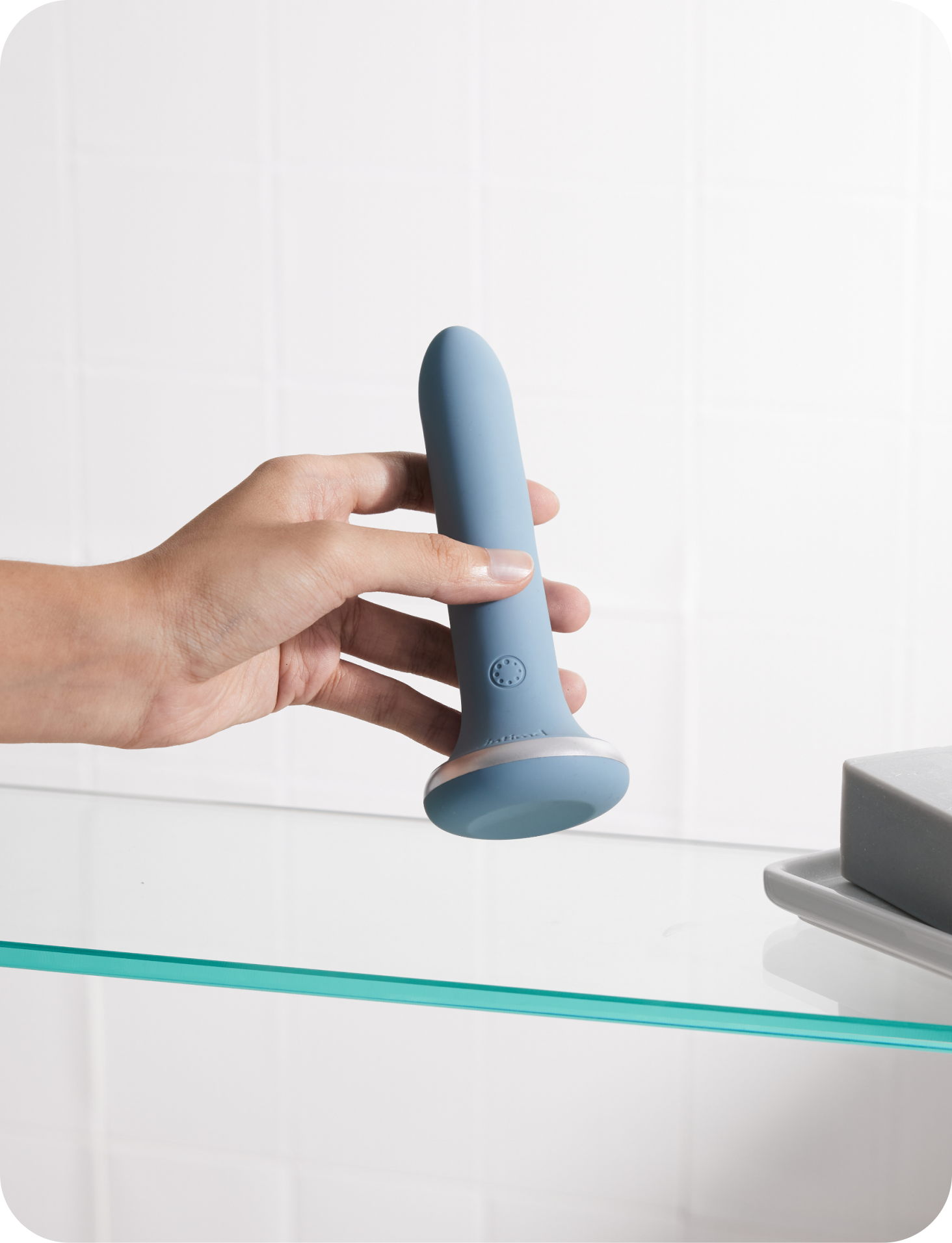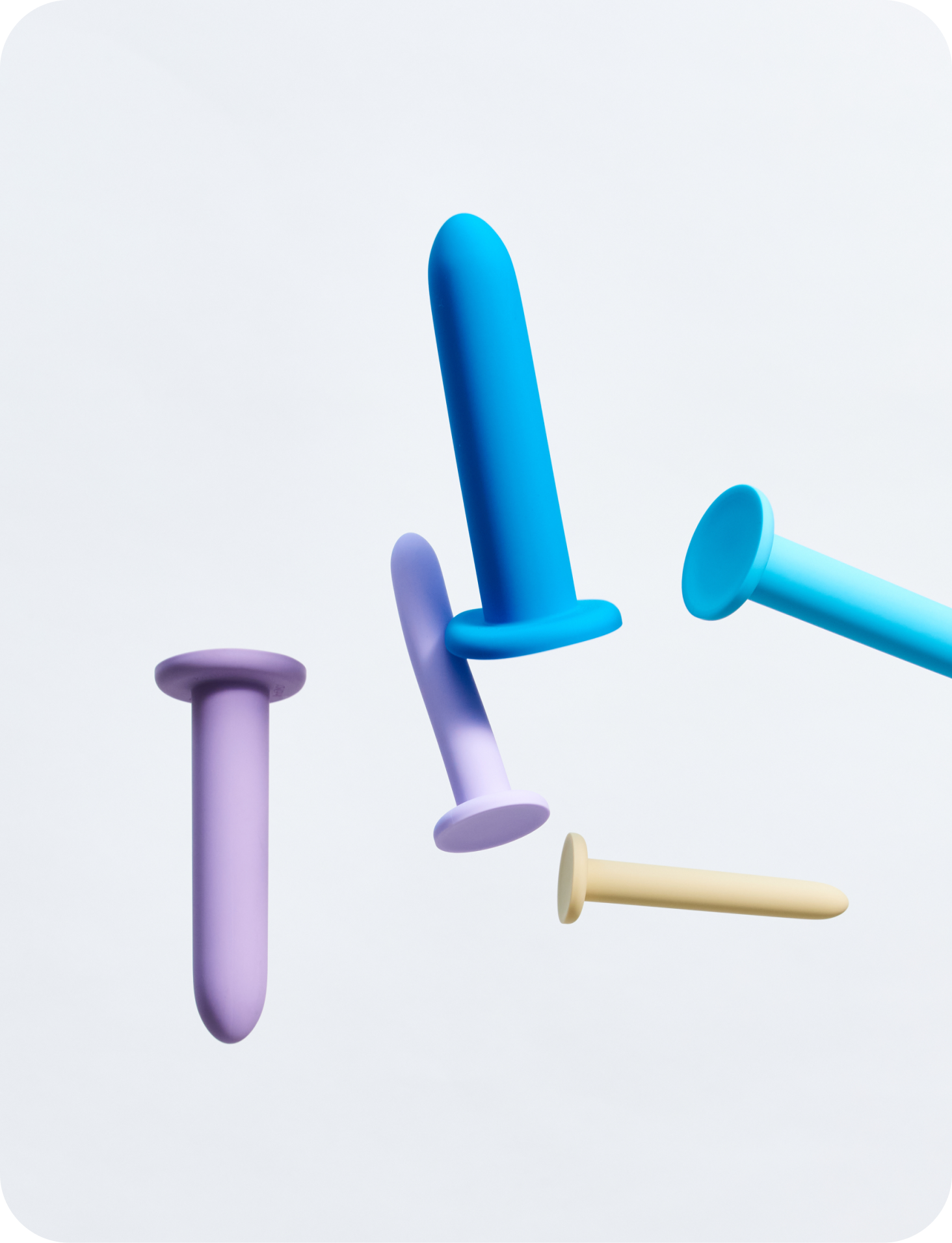Have you ever felt like your body resists vaginal penetration, leaving you frustrated and puzzled? This resistance might be a sign of vaginismus, a condition that causes your vaginal muscles to tighten up when you insert something into your vagina, making penetration difficult or painful.
But here's the good news: Vaginismus is a common issue, and there are effective treatments available to help you regain control and find pleasure again. In this article, we'll explain what vaginismus is, what causes it, and how you can overcome it with various solutions.
Table of Contents
- Vaginismus: What It Is
- Symptoms of Vaginismus
- Causes of Vaginismus
- Diagnosis of Vaginismus
- Treatment Options for Vaginismus
- Conclusion
Vaginismus: What It Is
Vaginismus is a complex condition with multiple contributing factors. Physical factors such as infections, trauma, or surgery can play a role. Psychological factors like anxiety and fear can trigger muscle spasms, while emotional factors, such as past traumatic experiences, can also contribute to vaginismus.
Vaginismus is a type of sexual dysfunction in which involuntary muscle spasms interfere with vaginal intercourse, especially when attempting it for the first time. It can also occur when inserting a tampon or while getting a pelvic exam.
Types of Vaginismus
Vaginismus comes in two main types:
- Primary Vaginismus refers to women who have had vaginismus symptoms from the beginning of their sexual life. This means they've never been able to undergo any form of vaginal penetration comfortably.
- Secondary Vaginismus occurs when women who have never had issues with vaginal penetration develop vaginismus symptoms, often due to childbirth, trauma, or infections.
Additionally, some women may develop vaginismus after menopause due to lower estrogen levels, leading to reduced vaginal elasticity and lubrication. This can make intercourse uncomfortable, painful, or even impossible.
Symptoms of Vaginismus
The primary symptoms of vaginismus are involuntary muscle spasms in the vaginal area. However, the severity of the condition varies among women. Here are early signs of vaginismus that you should look out for:
- Difficulty, pain, or discomfort during sex or when inserting anything into the vagina.
- Feeling pressure or a burning sensation in and around the vagina upon penetration.
- Experiencing unexplained fear or anxiety during sexual activities.
These symptoms can be quite challenging to deal with and can significantly impact your mental and emotional well-being.
Causes of Vaginismus
The reasons behind vaginismus are not always clear, but factors that may contribute to it include:
1. Physical Factors
- Infections or medical conditions that make the genital area sensitive or painful.
- Pelvic surgeries or trauma that lead to muscle tension and a fear of pain during penetration.
2. Psychological Factors
- Anxiety and fear related to sex as a result of past sexual trauma.
- Negative sexual experiences that create an aversion to penetration.
3. Emotional Factors
- Stress, relationship issues, or emotional conflicts contribute to muscle tension and discomfort during intercourse.
- Cultural or religious beliefs that lead to guilt or shame surrounding sex.
Understanding the potential causes of vaginismus is an essential step in finding the right treatment and support.
Diagnosis of Vaginismus
Vaginismus is usually diagnosed based on your symptoms and medical and sexual history. Your healthcare provider may perform a pelvic exam, which includes checking your vagina to rule out other potential causes of pain during penetration. To make the exam more comfortable, your physician may apply a numbing cream to the outside of the vagina. This is important because pelvic exams can trigger painful muscle spasms in people with vaginismus.
Treatment Options for Vaginismus
Vaginismus treatments can help reduce the pain and fear associated with it. They often include medications, physical therapy, and counseling to manage negative emotions related to vaginal penetration. Here are some common treatment methods:
- Topical Therapy — Using creams with lidocaine or specially compounded creams can help alleviate the pain associated with this condition.
- Physical Therapy — Kegel exercises, muscle relaxation, and deep breathing at home can help with controlling and relaxing pelvic floor muscles.
- Vaginal Dilator Therapy — Vaginal Dilators are tube-shaped devices that come in various sizes to gradually stretch the vagina and ease vaginal muscle tension. This therapy is highly effective in making vaginal penetration more comfortable.
- Cognitive-Behavioral Therapy — Cognitive-behavioral therapy (CBT) can help with the emotional side of vaginismus by identifying and changing negative thought patterns and behaviors. It's effective for anxiety, depression, and PTSD.
- Sex Therapy and Counseling — Sex therapists or counselors assist individuals and couples in resolving sexual concerns and enhancing their sexual well-being. This includes educating them about vaginismus, its causes, and effective management strategies, as well as promoting open communication and goal-oriented methods to improve sexual satisfaction.
Conclusion
Living with vaginismus can be challenging, impacting both your physical well-being and relationships. However, there's no shame in seeking help.
The first crucial step is to openly communicate with your partner about your feelings and fears regarding intercourse, as this can help you feel more relaxed.
Your doctor or therapist can provide effective strategies for overcoming vaginismus. Many women have successfully recovered and have transitioned from pain and fear to a fulfilling sexual life.
With the right support and a proactive approach, vaginismus is treatable, and a healthier, happier sexual life is well within your reach.
FAQs
1. How common is vaginismus?
Vaginismus officially affects 1 to 7% of the female population worldwide, making it a quite common condition. However, it is likely underdiagnosed since many women are unwilling to discuss the problem with their healthcare providers.
2. Can vaginismus be cured?
Yes, vaginismus can be treated and resolved with the right approach, including physical therapy, counseling, and self-help. Treatment may take longer if the cause is more complicated or if the symptoms are severe. Most people with vaginismus can overcome it and enjoy a healthy sexual life. Seeking professional help is important for recovery.
3. How to treat vaginismus at home?
Treating vaginismus at home can be a gradual process, but it's important to consult a healthcare professional for guidance. Here are some common home remedies to aid in the physical recovery of vaginismus:
- Relaxation Techniques — Practice exercises like deep breathing and progressive muscle relaxation to reduce anxiety and tension.
- Pelvic Floor Exercises — Strengthen and relax your pelvic floor muscles with Kegel exercises or other physical therapy options that your healthcare provider or physical therapist recommends.
- Vaginal Dilators — These are highly recommended to ease pain during sex or penetration. Vaginal dilators of increasing sizes to desensitize and gently stretch the vaginal muscles.
4. How can I prevent vaginismus?
Because it's not clear what causes vaginismus, it's hard to know how to prevent it. However, here are some tips to help you maintain a healthy and comfortable sexual life while reducing the risk of vaginismus:
- Educate yourself about sexual health.
- Communicate openly with your partner.
- Practice relaxation techniques.
- Manage stress.
- Maintain pelvic muscle health.
- Attend regular check-ups.
- Address emotional concerns.
- Ensure safe and consensual experiences.
- Use lubrication and relax before sex.
- Explore different forms of intimacy.




